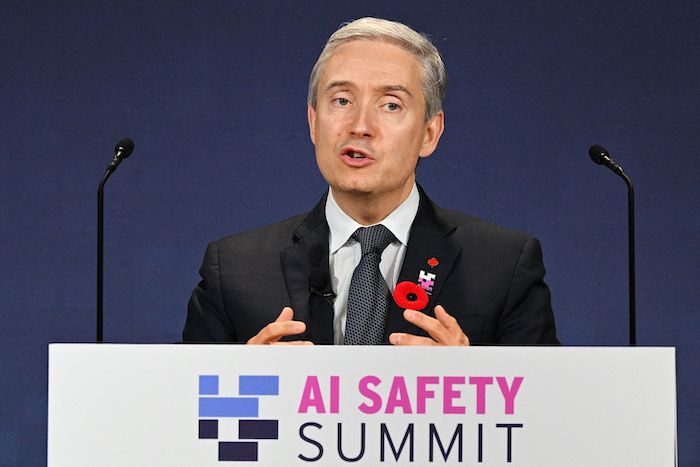Canadian Prime Minister Justin Trudeau has just announced C$2.4 billion in spending on artificial intelligence (AI). The vast majority will go towards investments in computing infrastructure (“compute”), a requirement to train today’s advanced AI systems.
Advanced AI systems (like GPT-4) train on trillions of text, image, and video datapoints. This requires massive amounts of compute. Canada lags on publicly-available compute, trailing far behind the U.S. (which accounts for more than half of global compute), Japan (10%), China (6%), and all other G7 countries, according to The Dais, a public policy think-tank at Toronto Metropolitan University.
The new spending aims to start to plug this hole. The idea is to buy existing capacity from outside of Canada in the short term, and also develop domestic capacity through a “new Canadian AI Sovereign Compute Strategy.” The announcement does not say how the C$2 billion will be split between these two, but at least in the next few years, it will be mainly from foreign sources.
This is happening in the context of a dynamic global race. The U.S., U.K., Japan, France, Germany, and many other countries around the world continue to make massive investments in AI and their AI supply chains. Just this week, on April 9, South Korea announced an amount equivalent to C$9.4 billion in spending on AI in the next three years, mostly connected to the specialized chips required for compute.
AI researchers want to go and stay where they can access talented collaborators, the data they need, and sufficient compute. So, AI research and recent algorithmic advances tend to cluster in cities with access to talent, data, and compute.
On the talent and expertise front, Canada punches above its economic weight. AI systems can now perform complex tasks with human-like proficiency, a transformative development made possible by foundational Canadian research and expertise. Canada has also built out and solidified its research and expertise clusters in its major cities, investing earlier than others through its 2017 Pan-Canadian AI Strategy.
Global AI activity is now clustered in key U.S. and Chinese cities, as well as cities in France, India, Japan, South Korea, the U.K., and others, in addition to Canada. With high global demand for talent, and limited supply, access to compute is even more important for attracting and retaining talent, especially as Canada lives next door to the home of the world’s major tech companies.

While compute represents C$2 billion of the announced C$2.4 billion in spending, the federal government also announced other elements, including those aimed at boosting companies’ AI adoption and addressing AI-related harms. While smaller-ticket items in relative terms, achieving these two aims is central to realizing the full benefits from AI.
This is because the benefits of AI hinge on widespread business adoption and public trust. Unfortunately, Canadian companies lag on technology adoption. Early evidence of generative AI adoption, specifically, is not promising: only 14 per cent of Canadian businesses were using or thinking of using generative AI as of early 2024, according to Statistics Canada.
If many more businesses adopt AI, this could meaningfully address Canada’s long-standing productivity problem. However, while the announcement references funding to boost adoption, what is not clear, at least not yet, is how this would differ from or improve on previous attempts to increase businesses’ adoption of technology.
On public trust, while AI holds tremendous potential to improve lives, AI systems also pose tremendous risks that leaders need to address if we hope to realize these benefits – from ‘deepfakes’ to bias to potential job loss and loss of control.
There is still much scientific, social, and economic analysis and research to be done to figure out the best ways to address these harms. The federal announcement creates a new AI Safety Institute with the aim of doing that. This echoes similar announcements made in the past few months by the U.S. and U.K.
The announcement also devotes some resources towards skills retraining due to potential job losses from AI, an area of considerable public concern, but does so in a very limited way.
This seems out of step with the more dramatic and widespread changes we are likely to see as AI becomes more capable and creates new opportunities, replaces some human work, and the nature of work itself changes, with humans increasingly working alongside AI.


